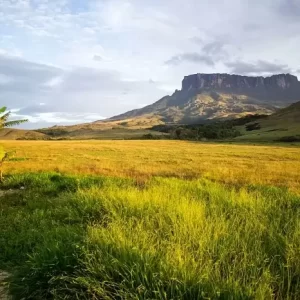Deep beneath the surface of Chihuahua, Mexico, lies one of the world’s most astonishing underground treasures — a place where science and myth converge: the Giant Crystal Cave of Naica.
Hidden within the Naica Mine, this surreal chamber holds dozens of enormous Selenite crystals, some weighing over 55 tons and reaching more than 12 feet (3.6 meters) in diameter. These are the largest natural crystals ever discovered on Earth, preserved in their original position since their formation — and virtually untouched for over a century.
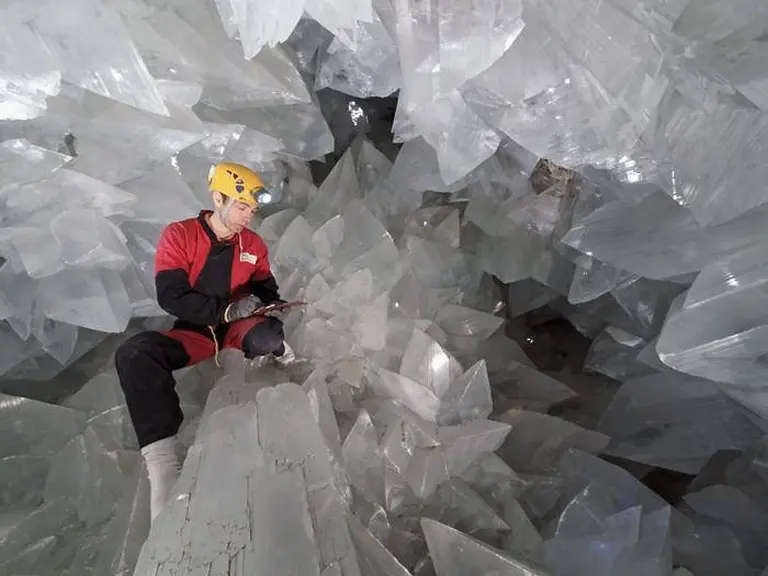
>> Fingal’s cave: Scotland’s mystical cathedral beneath the sea
Discovery Beneath the Silver Rush
The story begins in the 18th century, when silver was a prized resource in colonial Mexico. The Naica Mine was initially discovered by miners searching for silver deposits. Large-scale mining operations began in the early 1900s, and just before the mine temporarily closed in 1911, local workers stumbled upon an extraordinary cavern filled with massive crystals. Recognizing its value, the Mexican government ensured its protection to prevent destruction.
Yet, the world wouldn’t truly know of this marvel until 2000, when brothers and researchers Pedro and Juan Sanchez rediscovered the cave during exploratory drilling in the Naica system. What they found stunned them: a giant, cathedral-like room nearly 300 meters (900 feet) underground, glittering with towering crystal columns that seemed sculpted by nature’s hand over half a million years.
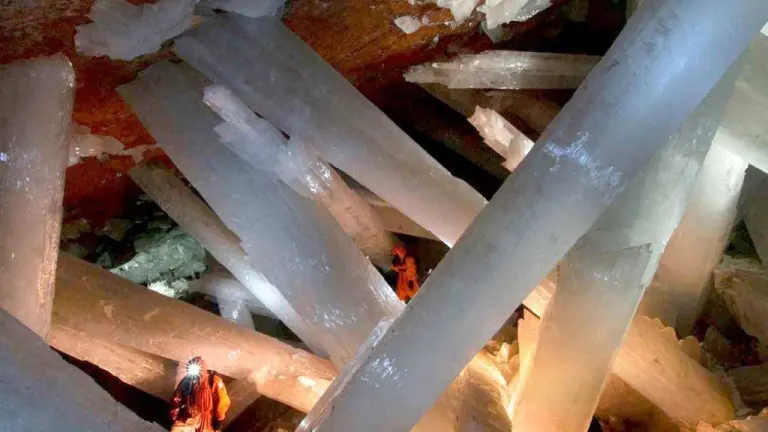
>> Longyou caves: A mysterious wonder defying time and imagination
Nature’s Unforgiving Beauty
The Giant Crystal Cave’s surreal beauty hides a harsh reality — its average temperature is around 58°C (136°F), with nearly 100% humidity. These extreme conditions make human exploration highly dangerous; anyone without a protective suit and oxygen supply can only survive inside for less than 10 minutes.
This hostile environment is also what preserved the crystals for so long. The cave sits above a pool of geothermal magma, which provided mineral-rich, superheated water. Over time, these minerals slowly crystallized into the Selenite formations we see today — a process that took hundreds of thousands of years.
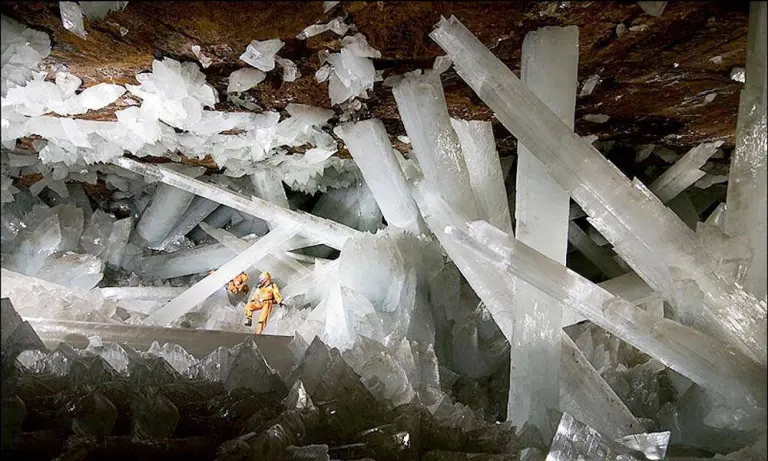
>> Cosquer cave: An underwater gateway to prehistoric times
Legends and Mysticism
Local myths and ancient beliefs add another layer of intrigue. Selenite, the crystal that dominates the cave, has long been associated with healing energy, rejuvenation, and lunar magic. In Greek mythology, Selene, the moon goddess, was believed to bring good fortune, and her name lives on in these crystals. Some believe that touching Selenite can restore youth or promote spiritual clarity, making this cave not only a geological wonder but also a mystical sanctuary.
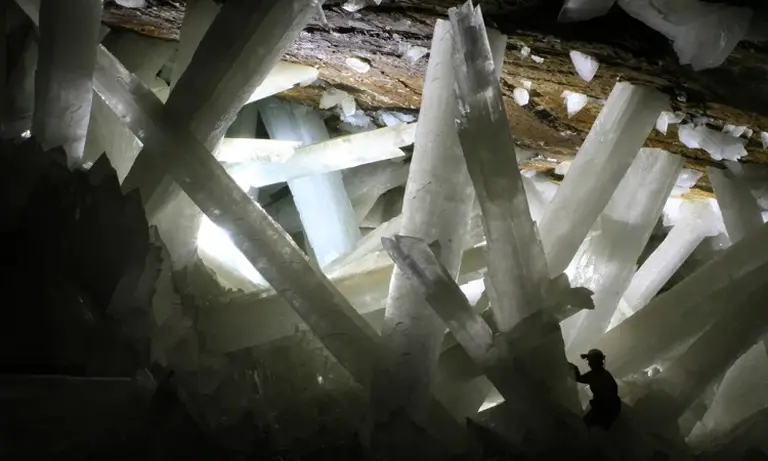
>> El Árbol del Tule – The Thousand-Year-Old Giant Tree in Mexico That Takes 30 People to Embrace
Though the Giant Crystal Cave is not open for mainstream tourism due to its extreme environment, it remains one of the most jaw-dropping natural phenomena ever discovered. Hidden beneath the desert landscape of Mexico, this underground world of glowing giants continues to fascinate scientists and mystics alike — a rare reminder that Earth’s most magical secrets often lie just beneath our feet.
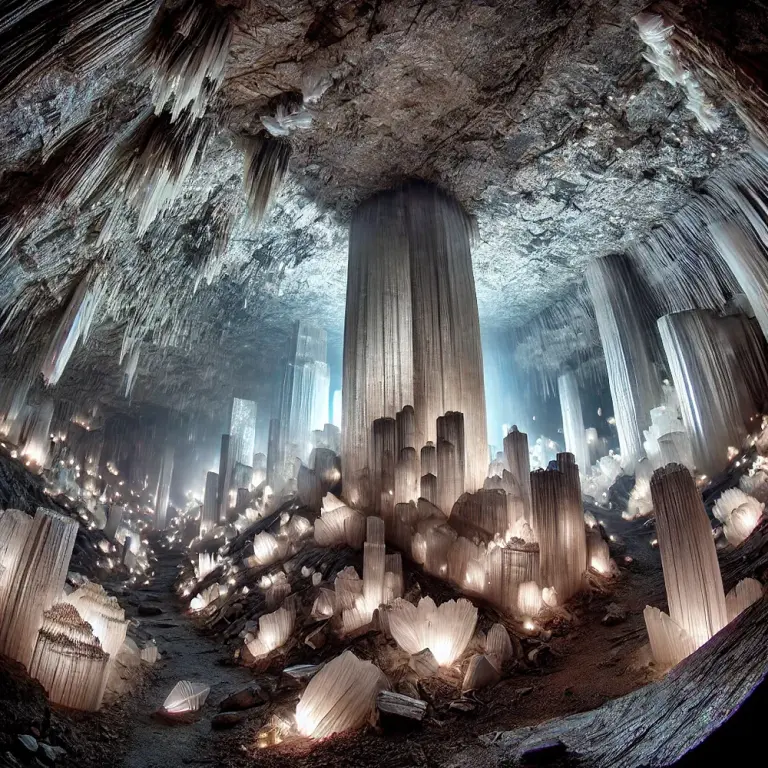
>> La Isla de las Muñecas: Mexico’s Haunting Island of Dolls
FAQ
What is the Giant Crystal Cave?
The Giant Crystal Cave is a natural cavern located nearly 300 meters (980 feet) underground in the Naica Mine in Chihuahua, Mexico. It is famous for housing massive gypsum crystals, some measuring over 12 meters (39 feet) in length and weighing up to 55 tons. These are the largest crystals ever found on Earth.
How were the crystals formed?
Over 500,000 years, mineral-rich groundwater — heated by magma deep below — flowed into underground chambers. The cave remained filled with water, rich in calcium and sulfate, allowing the slow growth of selenite crystals in perfectly stable conditions of heat and humidity (around 58°C or 136°F with 90–99% humidity).
When mining operations pumped the water out, the cave was accidentally discovered in 2000.
Where exactly is it located?
The cave is beneath Naica Mountain, part of an active lead and silver mine owned by the Peñoles company. It’s located about: 2 hours south of Chihuahua City, in northern Mexico
Can tourists visit the cave?
Unfortunately, no — the Giant Crystal Cave is not open to the public due to extreme conditions:
- Temperatures up to 58°C (136°F)
- Humidity levels close to 100%
- Humans can only survive inside for 10–15 minutes without special suits
Exploration requires cooling suits, oxygen tanks, and professional gear. Only scientists and a few journalists have been granted access for research purposes.
How was the cave discovered?
In April 2000, miners drilling a new tunnel beneath the Naica Mine stumbled upon a hidden chamber. When they drained the water, they found a glittering world of massive, sword-like crystals unlike anything ever seen before.
What kind of crystals are inside?
The crystals are made of selenite, a transparent form of gypsum. Their size and clarity are so extraordinary that they seem almost artificial — but they’re entirely natural, formed under precise geological conditions that existed for millennia.
Are there other caves nearby?
Yes. Naica is home to several crystal-filled caves:
- Cave of Swords (Cueva de las Espadas) – Discovered in 1910; has smaller crystals and is more accessible
- Queen’s Eye Cave, Candle Cave, and others, each with unique mineral formations
However, none are as visually and scientifically remarkable as Cueva de los Cristales.
Why is it called one of the most dangerous places on Earth?
The extreme environment poses severe risks:
- Hyperthermia within minutes
- Disorientation due to blinding reflections
- Slippery crystal surfaces
- Structural fragility of the crystals
Even experienced scientists can only enter for short, carefully monitored periods with proper gear.
Is the cave still accessible?
No — in recent years, the Naica Mine was closed, and the cave has refilled with groundwater, naturally preserving the crystals once again. While this prevents future exploration, it also protects the delicate formations from decay and human damage.
Why is the Giant Crystal Cave so important?
- It’s a natural laboratory for understanding crystal formation
- Scientists studied extremophile microbes trapped in crystals, offering clues to life on other planets
- It reveals Earth’s geological history, showcasing a perfect environment for mineral growth over millennia
What makes it a must-know geological wonder?
Few places on Earth evoke the feeling of being on another planet like this cave does. With its gigantic crystals, alien atmosphere, and scientific value, the Giant Crystal Cave is often compared to scenes from science fiction — but it’s entirely real, and it was hidden beneath our feet for centuries.
Though the Giant Crystal Cave isn’t one you can walk through as a tourist, it continues to captivate scientists, adventurers, and dreamers. It reminds us of how much of Earth’s beauty is still hidden below the surface, waiting to be discovered.



